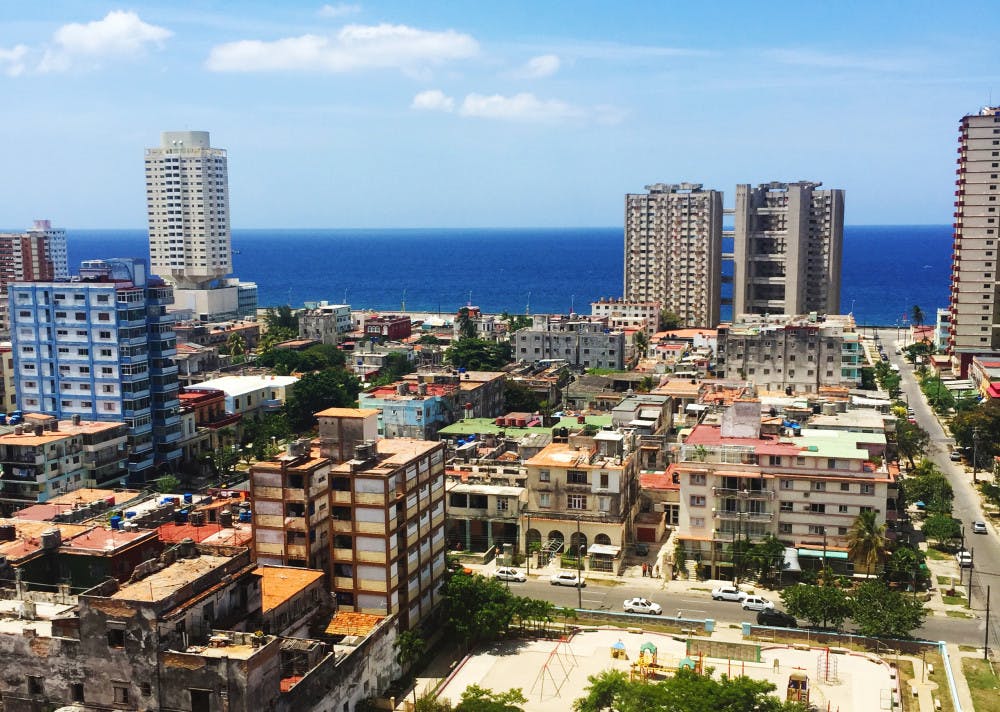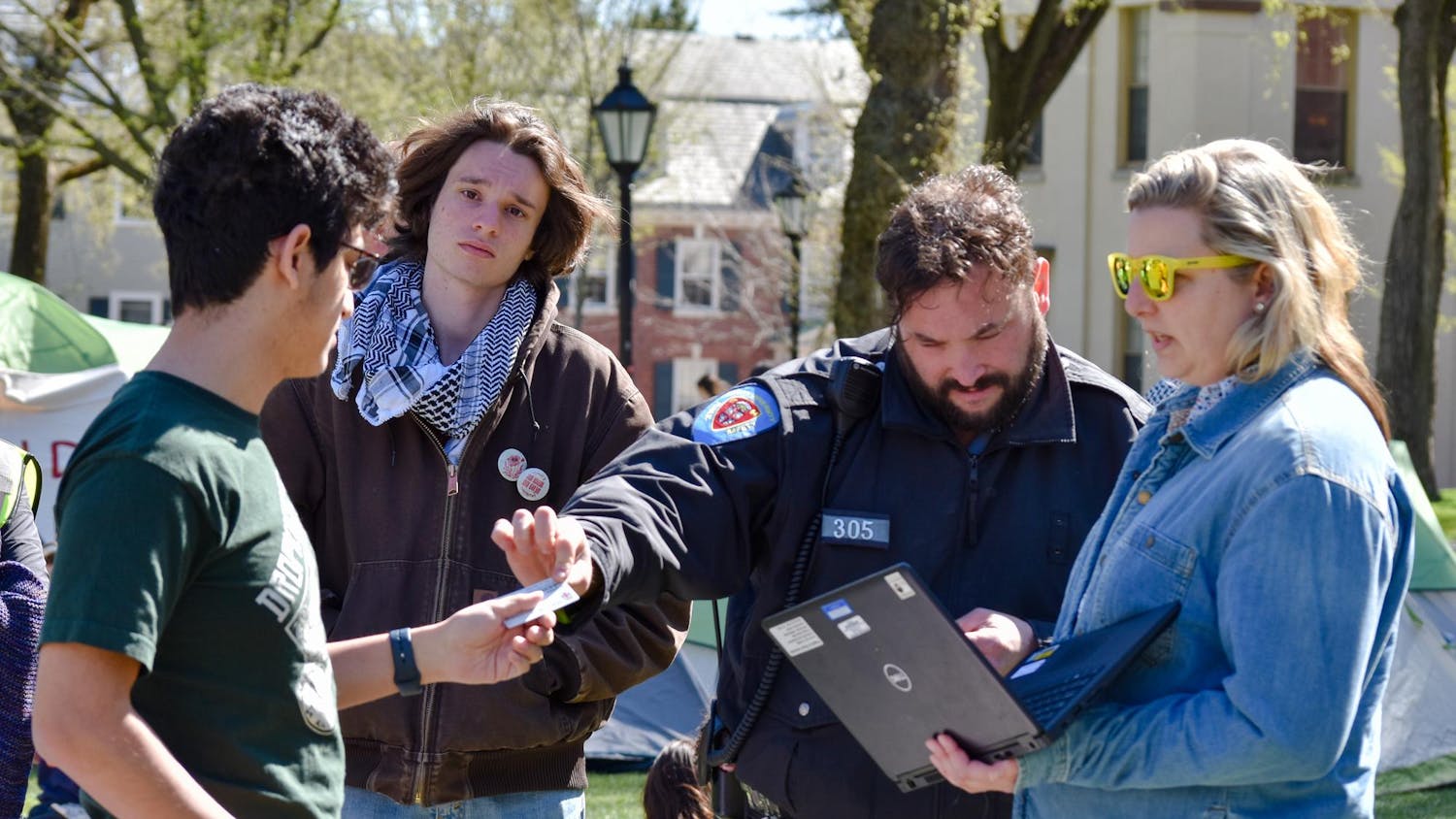As diplomatic relations between the United States and Cuba normalize, students have expressed increasing interest in studying in the communist country.
Last month, President Barack Obama announced that he would be the first sitting U.S. president in 88 years to visit Cuba.
“You could feel the excitement in the air,” said Kendall Brostuen, director of international programs and associate dean of the College, who was visiting the University’s program site at the time. “Students who are studying in Cuba are actually witnesses to history.”
“It’s definitely an amazing program,” said Michael Petro ’17, who is studying in Cuba this semester. “We have very privileged access to the island in a way that few Americans do.”
Academics
Brown’s study abroad presence in Cuba dates back to 2008. The University established a program in the country as a result of faculty interest, Brostuen said. At the time, between eight and 11 students participated in the program every semester.
In 2014, “Brown formed a large consortium of universities called the Consortium for Advanced Studies Abroad,” Brostuen said. Spearheaded by Brown, CASA unites nine leading U.S. universities — including six of the eight Ivy League schools, as well as Johns Hopkins University, Northwestern University and Vanderbilt University — to develop study abroad programs across the world, he added.
This semester, 29 students across the nine consortium schools enrolled in CASA’s Havana program, which first welcomed students in fall 2015, replacing the Brown program.
Brostuen said the program will expand to accommodate increasing student interest in studying in Cuba. This expansion will occur in a thoughtful way, which includes increasing support on the ground in order to “be hands-on with our students,” he said, adding, “We have no desire to make it a monstrous program in terms of size.”
CASA offers courses at Casa de Las Américas, a state-run research center for Caribbean and Latin American studies. These courses, designed for CASA students, are also open to Cuban students at the University of Havana. But those students often choose not to enroll in them, as they do not receive credit from CASA classes.
CASA students also have the option to take classes at the University of Havana, which Brostuen called “a great school with a lot of history to it.” This gives CASA students the opportunity to study alongside Cuban peers. In most cases, students take half of their courses at Casa de Las Américas and half at the University of Havana.
But the language may pose a problem for students studying there, wrote Marta Nuñez, a Cuban professor, in an email to The Herald. Some “CASA students cannot absorb all the new knowledge we teach them. … Maybe taking six Spanish language semesters (before arriving) is not enough.” But she added that the advent of the CASA program has also seen a jump in American students’ linguistic capabilities.
Limited resources
Cuba’s limited resources may also impede the educational experience there. “Resources at the (university’s) library are poor, and we should do something to help,” wrote Julio Ortega, professor of Hispanic studies and the visiting professor at Casa de Las Américas on the CASA program, in an email to The Herald. “I am afraid they (stopped) buying books in the ’70s.”
Petro said he has encountered some academic difficulties that he does not face in America. Because Wi-Fi is very limited in Cuba, when teachers show PowerPoints, students must share them with one another via flash drives. “Memory sticks are vital in Cuba. … That’s how you transfer information,” he added.
Four weeks into one of his classes, he has been unable to find a copy of a required textbook, despite a persistent search. When he asked his professor for advice on where to buy the book, she responded, “Finding the book is part of the class.”
But Nuñez wrote that contending with Cuba’s lack of resources can be educational for CASA students learning how to adapt to limited means.
Though they experience “better living conditions than their Cuban friends, they also confront enormous difficulties adapting to our meager material conditions,” she wrote. “I believe that they learn to live with less … at least until they go back to their original environments.”
The lack of resources is not only felt in the classroom but also follows students back to their residences.
Like all CASA students, Petro lives in a privately owned home rented out by the program — “the Cuban version of Airbnb,” he said. His apartment, which he shares with a CASA roommate, is on the second floor of a high-rise building on the coast. Sometimes waves crash 20-feet high over the sea wall and flood the basement of the building. This traps people inside and sometimes causes the power to go out. Running water is only turned on during the day, and tap water is not potable.
Cuban culture
Still, the living conditions have not dampened Petro’s experience.
“I’ve really, really enjoyed myself here,” Petro said. He said he was pleasantly surprised by how nice Cubans have been to him. “People are immensely friendly. You walk down the street and get invited into local houses,” he said.
Stephen Bozier ’17 studied in Cuba on the CASA program fall 2015. He said that his experience in Cuba was in many ways very different from his expectations. During his first week, he noticed that “being in Cuba didn’t feel like I was in a socialist or communist country,” he said, adding that this raised the question for him: “What is that supposed to feel like? And what does our American capitalist education lead us to believe” that life in a socialist or communist country is like?
In many ways, time is experienced differently in Cuba than in the United States, Bozier said. “There’s kind of a rhetoric that going to Cuba is like stepping into the 1950s or the 1960s, and I challenge that because when we went to Cuba it was very much 2015,” he said. But he added that “time definitely moves slower. I wasn’t pressured to have a plan for the next hour or the next minute or the next day.”
Bozier said at Brown he notices that many students have a “tunnel-vision existence going from one thing to the next.” But in Cuba, he became comfortable spending days exploring the city or walking about without a plan or responsibilities.
Ortega wrote that one of the biggest differences about studying in Havana is that “the city, its culture, diversity and energy, is part of your learning experience.” CASA students are not accustomed to seeing “such an integrated society, a healthy mixture, despite poverty and scarcity.”
Intersections of identity
Bozier said that, as a black American, his time in Cuba exposed him to a complex intersection of issues. “The rhetoric, especially due to the government, has made it so that the Cuban identity goes before any other racial identity,” and this has led to a “similar colorblind rhetoric” to that in the United States.
But black Cubans face discrimination in some ways, including higher rates of unemployment and worse average economic standing, and they are more likely to be stopped by the police, though Bozier noted that in Cuba police shootings of blacks are uncommon, unlike in America.
Bozier said that he did not generally face discrimination. “There are privileges that come with being a foreigner, especially when it comes to the idea of personal safety,” he said.
He recalled one instance in which policemen stopped him while he was walking with two fairer-skinned friends at night. Bozier imagines the policemen assumed he was a native following the two students to sell them something — which Bozier said he had come to realize was a common reason for police stops of black Cubans. But once he showed the policeman his American passport, they ended the interaction.
During his trip, as racial tensions ran high in America, Bozier said he felt to a certain extent “more comfortable (in Cuba) than I do in the United States.”





